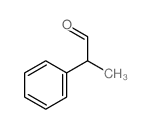Stability and comparative metabolism of selected felbamate metabolites and postulated fluorofelbamate metabolites by postmitochondrial suspensions.
Robert J Parker, Neil R Hartman, Bryan A Roecklein, Henry Mortko, Harvey J Kupferberg, James Stables, John M Strong
Index: Chem. Res. Toxicol. 18(12) , 1842-8, (2005)
Full Text: HTML
Abstract
Evidence has been presented suggesting that a reactive metabolite, 2-phenylpropenal (ATPAL), may be responsible for the toxicities observed during therapy with the antiepileptic drug felbamate (FBM). Formation of ATPAL from its unstable immediate precursor, 3-carbamoyl-2-phenylpropionaldedhyde (CBMA) requires the loss of the hydrogen atom at position 2 in the propane chain, and it has been postulated that substitution of this atom with fluorine would prevent the formation of ATPAL. On the basis of this hypothesis, 2-fluoro-2-phenyl-1,3-propanediol dicarbamate (F-FBM) was synthesized and is presently undergoing drug development. To test this hypothesis, we compared the metabolism by human liver postmitochondrial suspensions (S9) in vitro of selected FBM and postulated F-FBM metabolites leading to formation of CBMA or 3-carbamoyl-2-fluoro-2-phenyl-propionaldehyde (F-CBMA). All S9 incubations included GSH as a trapping agent for any reactive metabolites formed. Our results indicated that, in phosphate buffer, pH 7.4, at 37 degrees C, the half-life for 4-hydroxy-5-phenyltetrahydro-1,3-oxazin-2-one (CCMF) was 2.8 and 3.6 h in the presence or absence of GSH, respectively; compared to 4-hydroxy-5-fluoro-5-phenyl-tetrahydro-1,3-oxazin-2-one (F-CCMF) which lost only 2.5% or 4.9% over 24 h under the same conditions. When incubated with S9 in the presence of the cofactor, NAD+, 2-phenyl-1,3-propanediol monocarbamate (MCF) was oxidized to CCMF which was further oxidized to 3-carbamoyl-2-phenylpropionic acid (CPPA). 2-Fluoro-2-phenyl-1,3-propanediol monocarbamate (F-MCF) under similar conditions was stable, and no metabolites were observed. When CCMF was incubated with S9 in the presence of NAD+ cofactor, oxidation to CPPA and reduction to MCF were observed. In addition, a new atropic acid GSH adduct (ATPA-GSH) was identified by mass spectrometry. When F-CCMF was incubated under the same conditions as CCMF, both reduced and oxidized metabolites, F-MCF and 3-carbamoyl-2-fluoro-2-phenylpropionic acid (F-CPPA), respectively, were formed but at significantly lower rates, and no GSH conjugates were identified. Our results support the hypothesis that F-FBM and F-CCMF are not metabolized by S9 in vitro to the known reactive FBM metabolite, ATPAL.
Related Compounds
| Structure | Name/CAS No. | Molecular Formula | Articles |
|---|---|---|---|
 |
2-Phenylpropionaldehyde
CAS:93-53-8 |
C9H10O |
|
Reductive activation of dioxygen by a myoglobin reconstitute...
2002-09-25 [J. Am. Chem. Soc. 124(38) , 11234-5, (2002)] |
|
Investigating the role of 2-phenylpropenal in felbamate-indu...
2004-12-01 [Chem. Res. Toxicol. 17(12) , 1568-76, (2004)] |
|
Synthesis and in vitro reactivity of 3-carbamoyl-2-phenylpro...
1996-12-01 [Chem. Res. Toxicol. 9(8) , 1225-9, (1996)] |
|
Role of glutathione S-transferases A1-1, M1-1, and P1-1 in t...
2001-05-01 [Chem. Res. Toxicol. 14 , 511, (2001)] |
|
Interaction between human serum albumin and the felbamate me...
2002-06-01 [Chem. Res. Toxicol. 15(6) , 815-24, (2002)] |